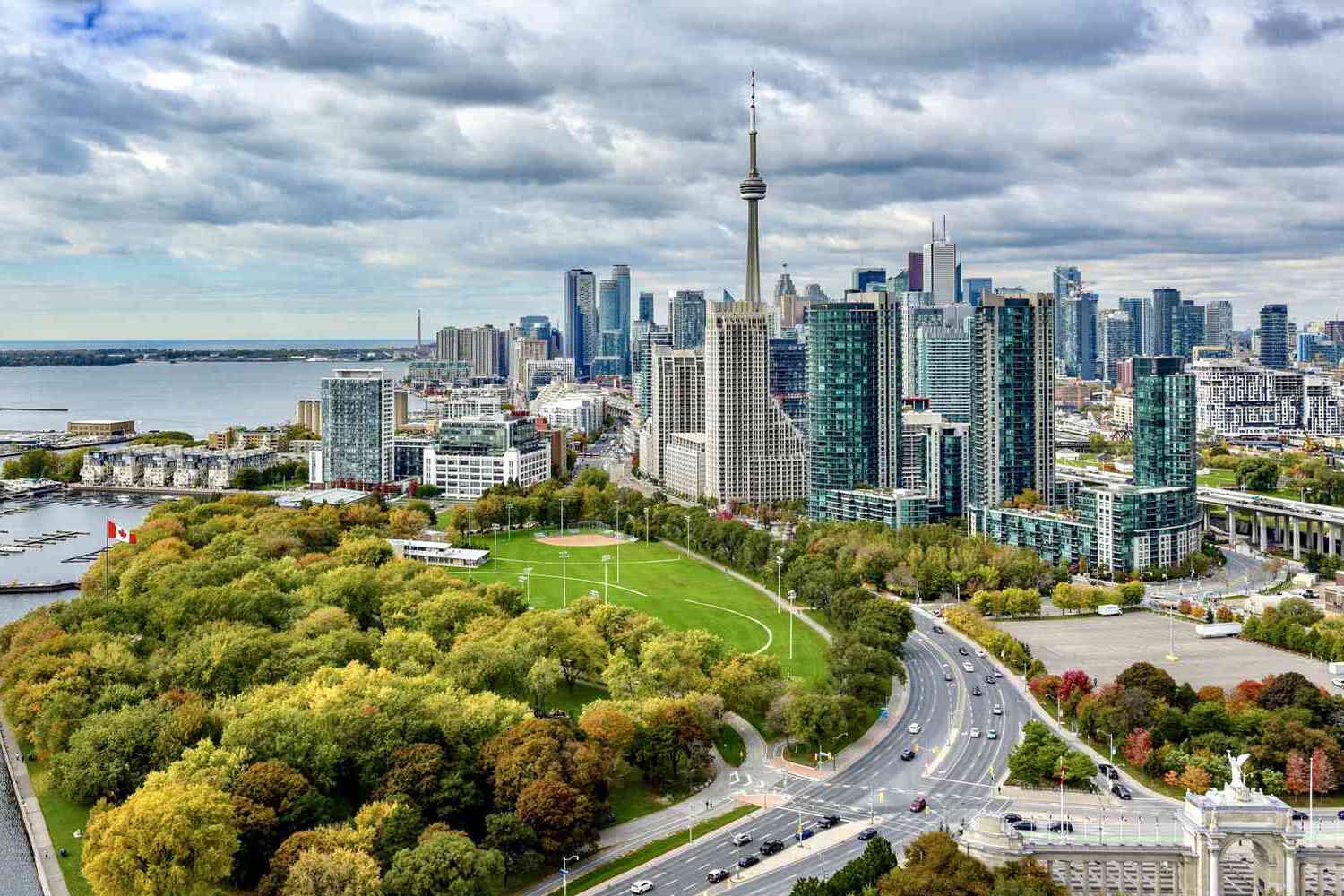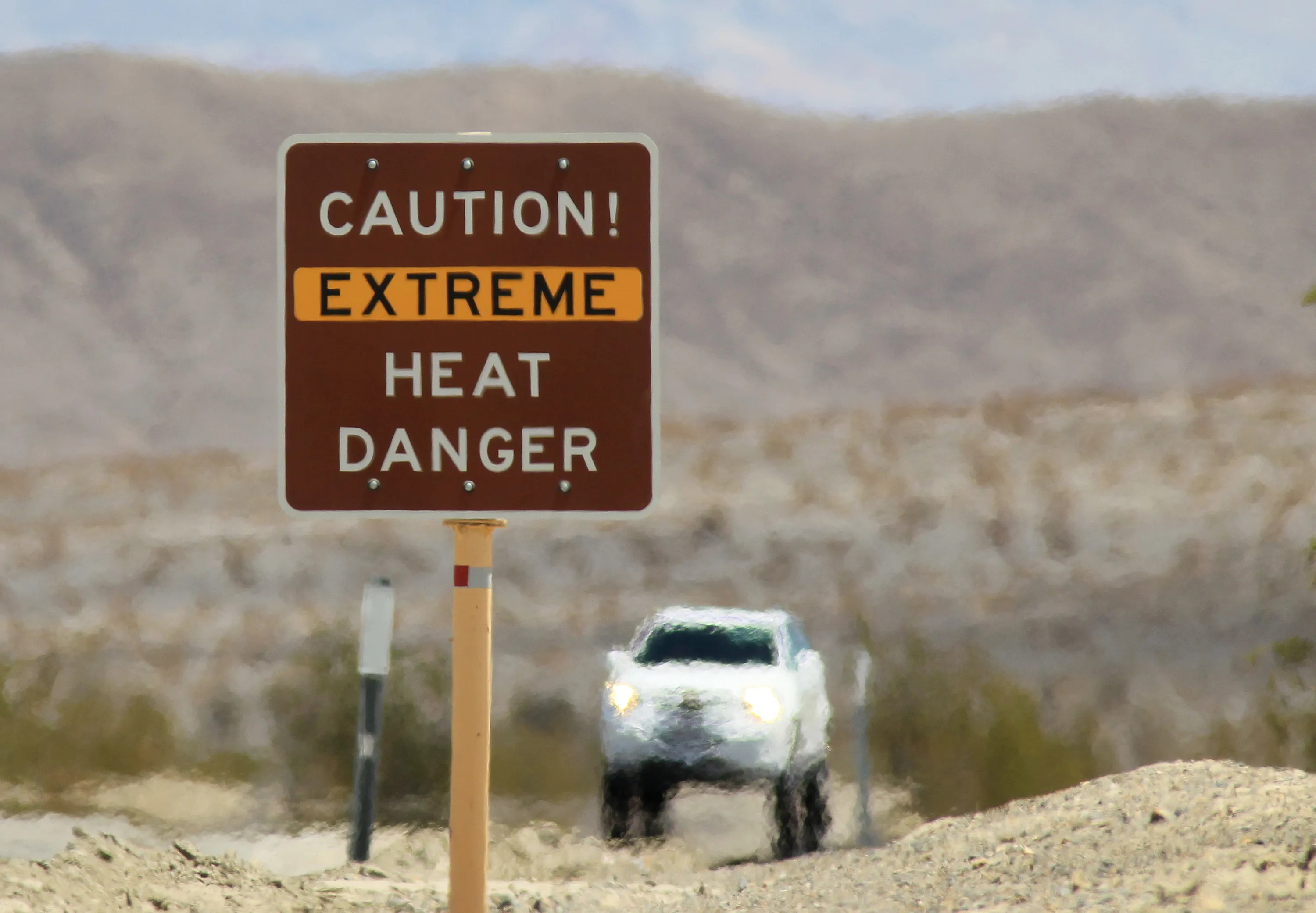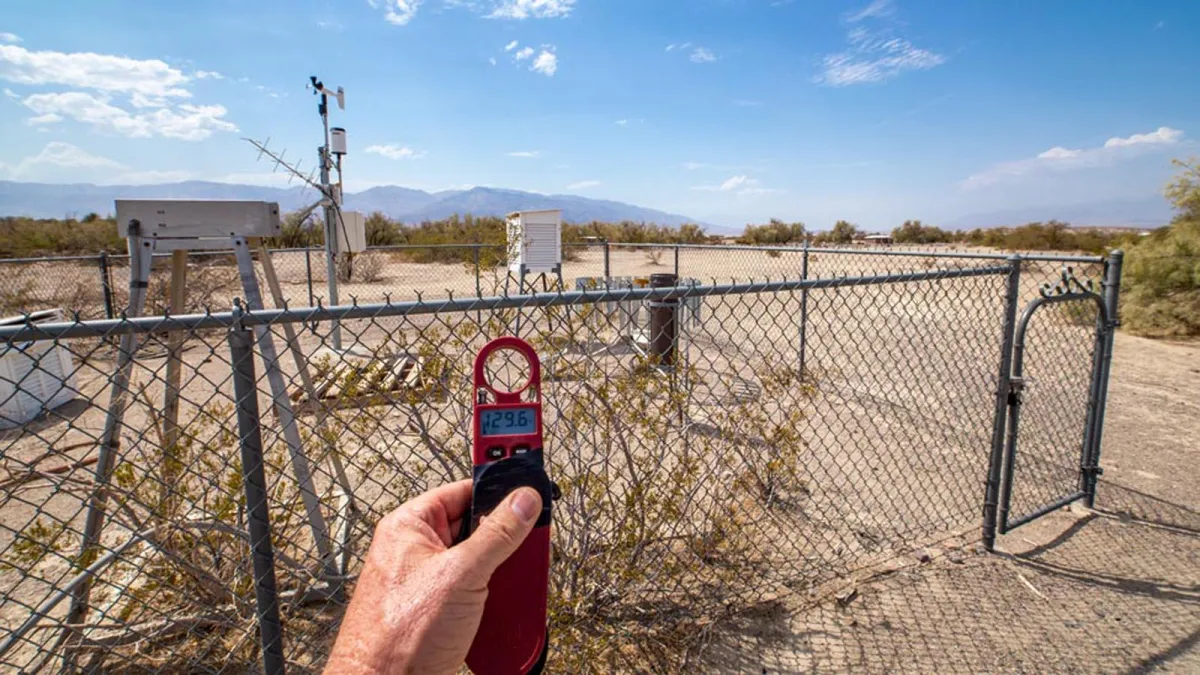Home>Weather and Climate>Record-breaking Heatwave Sweeps Across England


Weather and Climate
Record-breaking Heatwave Sweeps Across England
Published: March 1, 2024
Experience the unprecedented heatwave in England as the weather and climate reach record-breaking levels, impacting communities across the country. Stay informed and prepared for the extreme conditions.
(Many of the links in this article redirect to a specific reviewed product. Your purchase of these products through affiliate links helps to generate commission for Temperatures.com, at no extra cost. Learn more)
Table of Contents
Introduction
The scorching sun beats down relentlessly on the English countryside, as a record-breaking heatwave grips the nation in its fiery embrace. The air shimmers with heat, and the landscape appears to waver in the intense warmth. This extraordinary meteorological event has captured the attention of the entire country, sparking conversations and concerns about the unprecedented heat and its far-reaching impacts.
As temperatures soar to unprecedented levels, the heatwave has become a focal point of discussions among meteorologists, environmentalists, and the general public. The sweltering conditions have prompted a collective realization of the profound influence of weather patterns on our daily lives and the environment. The heatwave's emergence has also underscored the urgency of understanding the complex interplay between climate change and extreme weather events.
Amidst the relentless heat, communities are grappling with the tangible effects of the scorching temperatures. From parched landscapes to strained energy resources, the heatwave has left an indelible mark on England's natural and social landscapes. As the mercury continues to rise, the heatwave's impact reverberates across various sectors, prompting a closer examination of its underlying causes and the measures required to mitigate its effects.
In the following sections, we will delve into the multifaceted dimensions of this unprecedented heatwave, exploring its causes, environmental impacts, health concerns, and the response strategies adopted to safeguard communities. Additionally, we will unravel the historical context of heatwaves in England, shedding light on the recurrent nature of such extreme weather events and their evolving significance in the contemporary era.
The heatwave's influence extends beyond the immediate realm of weather phenomena, serving as a poignant reminder of the intricate relationship between human activities and the natural world. As we navigate through the intricate web of climatic shifts and their repercussions, it becomes increasingly evident that the heatwave is not merely a transient episode but a compelling narrative that intertwines the past, present, and future of England's climatic tapestry.
Causes of the Heatwave
The unprecedented heatwave sweeping across England has been propelled by a convergence of climatic factors, setting the stage for an extraordinary meteorological phenomenon. Several key elements have coalesced to fuel the intensity and duration of this scorching heatwave, reshaping the atmospheric dynamics and accentuating its impact on the region. Let's delve into the intricate web of factors contributing to this remarkable weather event:
-
High-Pressure Systems: A dominant high-pressure system has settled over the region, creating a stable atmospheric condition that inhibits cloud formation and precipitation. This persistent high-pressure zone acts as a thermal blanket, trapping heat and amplifying the temperature across England. The prolonged presence of this system has contributed significantly to the prolonged heatwave, prolonging the period of intense heat and arid conditions.
-
Jet Stream Disturbances: The erratic behavior of the jet stream, a fast-flowing ribbon of air in the upper atmosphere, has played a pivotal role in exacerbating the heatwave. Unusual undulations and deviations in the jet stream's path have led to the stagnation of weather patterns, allowing the heatwave to persist unabated. These disruptions have disrupted the typical movement of weather systems, leading to prolonged periods of high temperatures and reduced precipitation.
-
Climate Change: The overarching influence of climate change cannot be overlooked in the context of the current heatwave. The gradual warming of the planet has set the stage for more frequent and intense heatwaves, altering the fundamental dynamics of regional weather patterns. The compounding effects of greenhouse gas emissions and global warming have heightened the likelihood of extreme heat events, amplifying the impact of natural climatic variations.
-
Urban Heat Island Effect: The sprawling urban landscapes of England have contributed to the exacerbation of the heatwave through the urban heat island effect. The concentration of buildings, roads, and infrastructure in urban areas has led to the retention and release of heat, intensifying temperatures within cities and metropolitan regions. This localized warming effect has augmented the overall impact of the heatwave, particularly in densely populated urban centers.
As these interconnected factors intertwine and amplify one another, they have collectively set the stage for the extraordinary heatwave currently engulfing England. The convergence of high-pressure systems, jet stream disturbances, climate change, and urban heat island effects has culminated in a formidable meteorological event, underscoring the intricate interplay between natural climatic processes and human-induced influences.
Impacts on the Environment
The blistering heatwave has unleashed a cascade of profound impacts on England's natural environment, reshaping landscapes and ecosystems with its relentless intensity. From parched terrains to dwindling water resources, the environmental repercussions of this unprecedented heatwave reverberate across the country, underscoring the far-reaching influence of extreme weather events on the delicate balance of nature.
Drought and Water Scarcity
The prolonged heatwave has precipitated widespread drought conditions, desiccating soils and depleting water bodies across the region. Rivers and streams have dwindled to mere trickles, while reservoirs and aquifers have experienced alarming declines in water levels. The parched earth bears the unmistakable imprint of the heatwave's arid embrace, with vegetation wilting and agricultural lands languishing under the relentless sun. The specter of water scarcity looms large, posing a formidable challenge to ecosystems, agriculture, and water-dependent industries.
Ecosystem Disturbances
The scorching temperatures have disrupted the delicate equilibrium of ecosystems, exerting immense pressure on flora and fauna. Native plant species struggle to endure the prolonged heat and diminished water availability, leading to widespread stress and mortality. Wildlife habitats are strained as food and water sources dwindle, compelling animals to adapt to the harsh conditions or seek refuge in more hospitable environments. The heatwave's impact on biodiversity reverberates through the interconnected web of ecological relationships, underscoring the vulnerability of natural systems in the face of extreme climatic events.
Wildfires and Air Quality
The tinder-dry landscapes, exacerbated by the heatwave, have heightened the risk of wildfires, engulfing vast expanses of land in a fiery embrace. The conflagrations not only ravage forests and grasslands but also pose a significant threat to air quality, releasing copious amounts of smoke and particulate matter into the atmosphere. The resultant haze shrouds the landscape, diminishing visibility and compromising air quality, thereby posing health risks to both humans and wildlife. The interplay of wildfires and air pollution underscores the multifaceted environmental impact of the heatwave, amplifying its influence on atmospheric dynamics and ecological well-being.
Agricultural Impacts
The agricultural sector bears the brunt of the heatwave's environmental toll, grappling with diminished crop yields, water stress, and livestock management challenges. Crops wither under the unrelenting sun, while livestock face heightened heat stress and reduced forage availability. The agricultural landscape undergoes a profound transformation as farmers contend with the ramifications of the heatwave, navigating the complexities of water management, crop resilience, and livestock welfare. The agricultural impacts of the heatwave resonate through the food supply chain, underscoring the interconnectedness of environmental dynamics and human livelihoods.
As the heatwave continues to exert its formidable influence on England's natural environment, the intricate interplay of drought, ecosystem disturbances, wildfires, and agricultural challenges underscores the pervasive reach of extreme weather events. The environmental impacts of the heatwave serve as a poignant reminder of the delicate balance of nature and the imperative of fostering resilience in the face of climatic upheavals.
Health Concerns
The scorching heatwave gripping England has precipitated a myriad of health concerns, casting a shadow of apprehension over communities grappling with the relentless onslaught of high temperatures. As the mercury surges to unprecedented levels, the populace contends with a host of health challenges stemming from the extreme climatic conditions. From heat-related illnesses to exacerbated respiratory ailments, the health implications of the heatwave permeate various facets of public well-being, necessitating heightened vigilance and proactive measures to safeguard individual and community health.
Heat-Related Illnesses
The soaring temperatures have engendered a surge in heat-related illnesses, posing a significant threat to public health. Heat exhaustion and heatstroke loom as formidable adversaries, particularly among vulnerable populations such as the elderly, young children, and individuals with pre-existing medical conditions. The relentless heat exacts a toll on the body's thermoregulatory mechanisms, leading to dehydration, heat cramps, and in severe cases, life-threatening heatstroke. The prevalence of heat-related illnesses underscores the imperative of staying hydrated, seeking shade, and avoiding prolonged exposure to the scorching sun.
Exacerbated Respiratory Conditions
The heatwave's impact extends beyond heat-related ailments, exacerbating respiratory conditions and posing challenges for individuals with asthma, allergies, and other pulmonary disorders. The combination of high temperatures and poor air quality, exacerbated by wildfires and stagnant atmospheric conditions, heightens the risk of respiratory distress. The inhalation of airborne pollutants and particulate matter further compounds the respiratory challenges, necessitating heightened awareness and proactive measures to mitigate the impact on vulnerable individuals.
Dehydration and Heat-Related Fatigue
Dehydration emerges as a pervasive health concern amidst the sweltering heatwave, accentuating the risk of heat-induced fatigue and diminished physical well-being. The body's vital functions are strained as it contends with fluid loss and electrolyte imbalances, underscoring the critical importance of adequate hydration. Prolonged exposure to high temperatures can precipitate heat-related fatigue, impairing cognitive function and physical performance. The imperative of staying well-hydrated and recognizing the signs of dehydration assumes paramount significance in safeguarding individual health during the heatwave.
Vulnerable Populations and Community Support
Vulnerable populations, including the elderly, individuals experiencing homelessness, and those with limited access to cooling resources, face heightened health risks during the heatwave. Community support systems and outreach initiatives play a pivotal role in ensuring the well-being of these individuals, providing access to cooling centers, hydration resources, and essential support services. The collective vigilance and proactive intervention of communities are instrumental in safeguarding the health of vulnerable populations amidst the formidable challenges posed by the scorching heatwave.
As the heatwave persists, the imperative of prioritizing individual and community health remains paramount, underscoring the need for heightened awareness, proactive measures, and inclusive support systems. The multifaceted health concerns stemming from the heatwave necessitate a concerted effort to foster resilience and well-being, mitigating the impact of extreme climatic conditions on public health.
Response and Precautionary Measures
In response to the unprecedented heatwave sweeping across England, a concerted effort has been mobilized to implement precautionary measures and mitigate the far-reaching impacts of the scorching temperatures. From public health initiatives to environmental conservation strategies, a multifaceted approach has been adopted to safeguard communities and ecosystems amidst the formidable challenges posed by the heatwave.
Read more: Portland’s Highest Recorded Temperature
Public Health Campaigns and Outreach
Public health agencies and local authorities have spearheaded extensive campaigns to raise awareness about heat-related illnesses and disseminate vital information on staying safe during the heatwave. Educational initiatives emphasizing the importance of hydration, seeking shade, and recognizing the signs of heat exhaustion have been instrumental in empowering individuals to safeguard their well-being. Moreover, targeted outreach efforts have been directed towards vulnerable populations, ensuring access to cooling centers, hydration resources, and essential support services.
Emergency Response and Relief Efforts
Emergency response teams and relief organizations have been on high alert, ready to provide assistance and support to individuals and communities impacted by the heatwave. Rapid response mechanisms have been activated to address heat-related emergencies, ensuring timely medical intervention and essential aid to those in need. Additionally, collaborative efforts between government agencies and non-profit organizations have facilitated the distribution of heat relief supplies, including water, cooling devices, and protective gear, to mitigate the impact of the scorching temperatures.
Environmental Conservation and Water Management
Environmental conservation initiatives have been pivotal in mitigating the environmental impact of the heatwave, focusing on water conservation, ecosystem resilience, and wildfire prevention. Water management strategies aimed at optimizing water usage and minimizing wastage have been implemented to alleviate the strain on dwindling water resources. Furthermore, proactive measures to mitigate the risk of wildfires, including controlled burns and heightened surveillance, have been instrumental in safeguarding ecosystems and mitigating air quality degradation.
Urban Planning and Heat Resilience
Urban planning and infrastructure development have been underscored as critical components of enhancing heat resilience in urban areas. The integration of green spaces, urban forests, and heat-reflective materials in urban design has been prioritized to mitigate the urban heat island effect and foster cooler microclimates within cities. Furthermore, the implementation of heat-resilient building standards and the expansion of shaded public spaces have been instrumental in enhancing the adaptive capacity of urban environments to withstand the impact of extreme heat events.
Read more: Cleveland Ohio Peaks at Record Heat Wave
Community Engagement and Support Networks
Community engagement and support networks have played a pivotal role in fostering resilience and solidarity amidst the heatwave. Community-led initiatives, including neighborhood watch programs, mutual aid networks, and volunteer-driven outreach efforts, have bolstered the collective response to the heatwave. The spirit of communal support and mutual assistance has been instrumental in ensuring the well-being of vulnerable individuals and fostering a sense of unity in confronting the challenges posed by the scorching temperatures.
As the heatwave persists, the proactive implementation of response and precautionary measures remains paramount, underscoring the imperative of collective action and adaptive resilience in navigating the complexities of extreme weather events. The collaborative endeavors aimed at safeguarding public health, mitigating environmental impact, and fostering community resilience serve as a testament to the indomitable spirit and unwavering commitment of individuals and organizations in confronting the formidable challenges posed by the unprecedented heatwave.
Historical Context of Heatwaves in England
The historical annals of England bear witness to a tapestry of heatwaves that have woven their scorching imprints across the landscape, leaving an indelible mark on the collective memory of the nation. From the searing heatwaves of yesteryears to the contemporary manifestations of extreme climatic events, England's historical context is replete with narratives of sweltering temperatures, parched landscapes, and the enduring resilience of communities in the face of formidable weather challenges.
One of the most notable heatwaves in England's history unfolded during the scorching summer of 1976, etching itself into the collective consciousness as a benchmark of extreme heat. The relentless warmth gripped the nation, ushering in a period of unprecedented drought and soaring temperatures. Rivers dwindled, reservoirs ran dry, and the parched earth bore the unmistakable imprint of the heatwave's arid embrace. The societal impact was profound, as water shortages prompted stringent conservation measures, and agricultural landscapes bore the brunt of diminished crop yields and livestock stress.
The historical tapestry of heatwaves in England extends further back in time, encompassing episodes of intense warmth and climatic upheavals that have shaped the nation's environmental and social dynamics. The heatwave of 1911 stands as a testament to the enduring resilience of communities in the face of extreme weather, as soaring temperatures tested the fortitude of agricultural practices and societal adaptation. The historical context of heatwaves in England serves as a poignant reminder of the cyclical nature of climatic phenomena and the imperative of fostering adaptive resilience in the face of recurrent weather challenges.
As England navigates the contemporary landscape of extreme heat events, the historical context of heatwaves provides invaluable insights into the evolving dynamics of climatic patterns and the enduring spirit of communities in confronting formidable weather challenges. The interplay of historical narratives and contemporary manifestations underscores the cyclical nature of heatwaves and the imperative of proactive adaptation to mitigate their impact on the environment, public health, and societal well-being.
Conclusion
The record-breaking heatwave that has swept across England stands as a testament to the profound influence of extreme weather events on the fabric of society and the environment. As the scorching temperatures persist, the multifaceted dimensions of the heatwave underscore the imperative of proactive adaptation, collective resilience, and informed stewardship of natural resources. From the intricate interplay of climatic factors fueling the heatwave to its far-reaching impacts on the environment, public health, and historical context, the narrative of the heatwave intertwines the past, present, and future of England's climatic tapestry.
The convergence of high-pressure systems, jet stream disturbances, climate change, and urban heat island effects has set the stage for an extraordinary meteorological event, reshaping the atmospheric dynamics and accentuating its impact on the region. The environmental repercussions of the heatwave, including drought and water scarcity, ecosystem disturbances, wildfires, and agricultural impacts, underscore the pervasive reach of extreme weather events and the delicate balance of nature. Furthermore, the health concerns stemming from the heatwave necessitate a concerted effort to foster resilience and well-being, mitigating the impact of extreme climatic conditions on public health.
In response to the unprecedented heatwave, a multifaceted approach has been adopted to safeguard communities and ecosystems amidst the formidable challenges posed by the scorching temperatures. From public health campaigns and emergency response efforts to environmental conservation strategies and community engagement, the collective response to the heatwave exemplifies the indomitable spirit and unwavering commitment of individuals and organizations in confronting the formidable challenges posed by extreme weather events.
The historical context of heatwaves in England provides invaluable insights into the evolving dynamics of climatic patterns and the enduring spirit of communities in confronting formidable weather challenges. The interplay of historical narratives and contemporary manifestations underscores the cyclical nature of heatwaves and the imperative of proactive adaptation to mitigate their impact on the environment, public health, and societal well-being.
As England navigates the complexities of the unprecedented heatwave, the imperative of prioritizing individual and community health, safeguarding the environment, and fostering adaptive resilience remains paramount. The heatwave serves as a poignant reminder of the intricate relationship between human activities and the natural world, underscoring the urgency of understanding the complex interplay between climate change and extreme weather events. In the face of the scorching temperatures, the collective endeavor to navigate the challenges posed by the heatwave epitomizes the resilience, solidarity, and unwavering determination of communities to confront and adapt to the formidable forces of nature.











